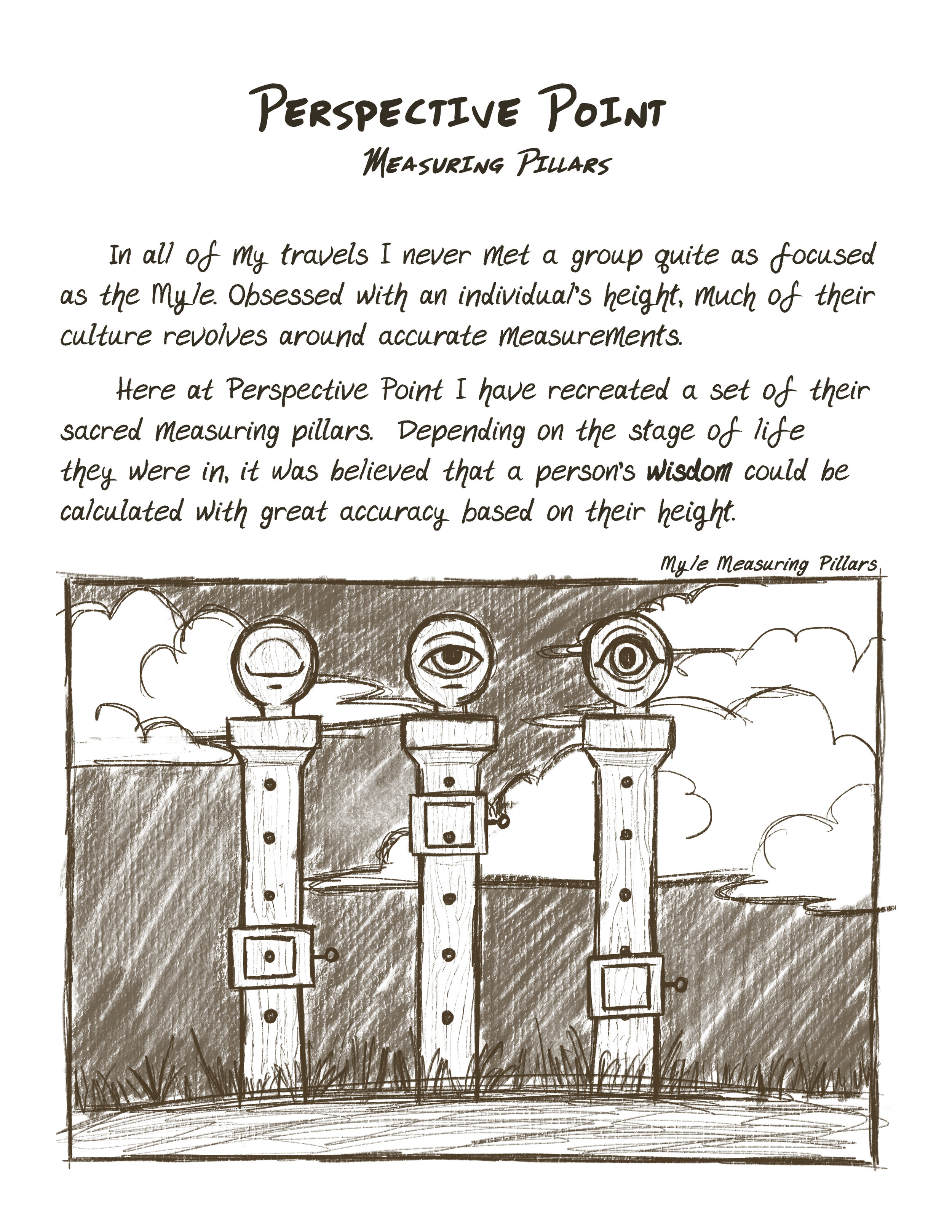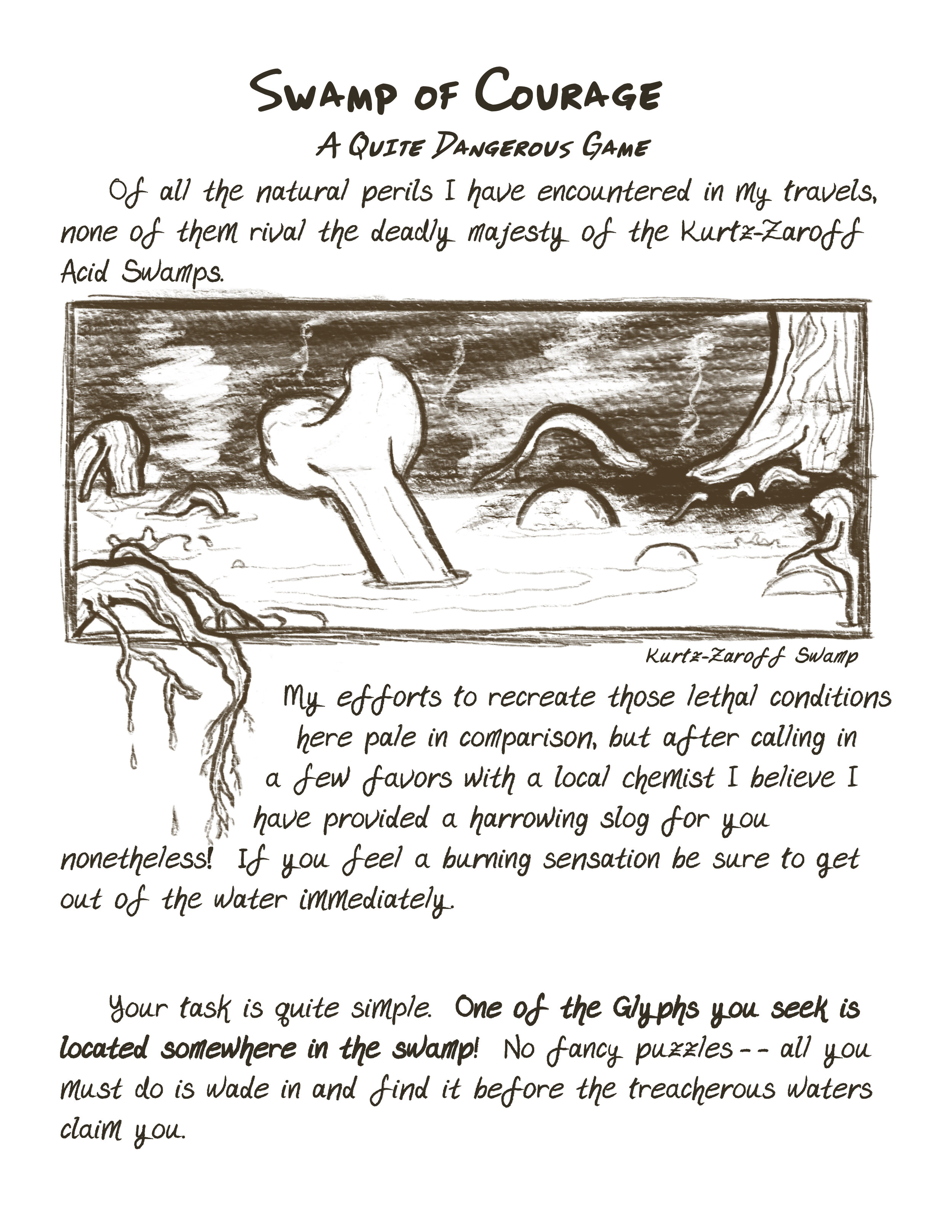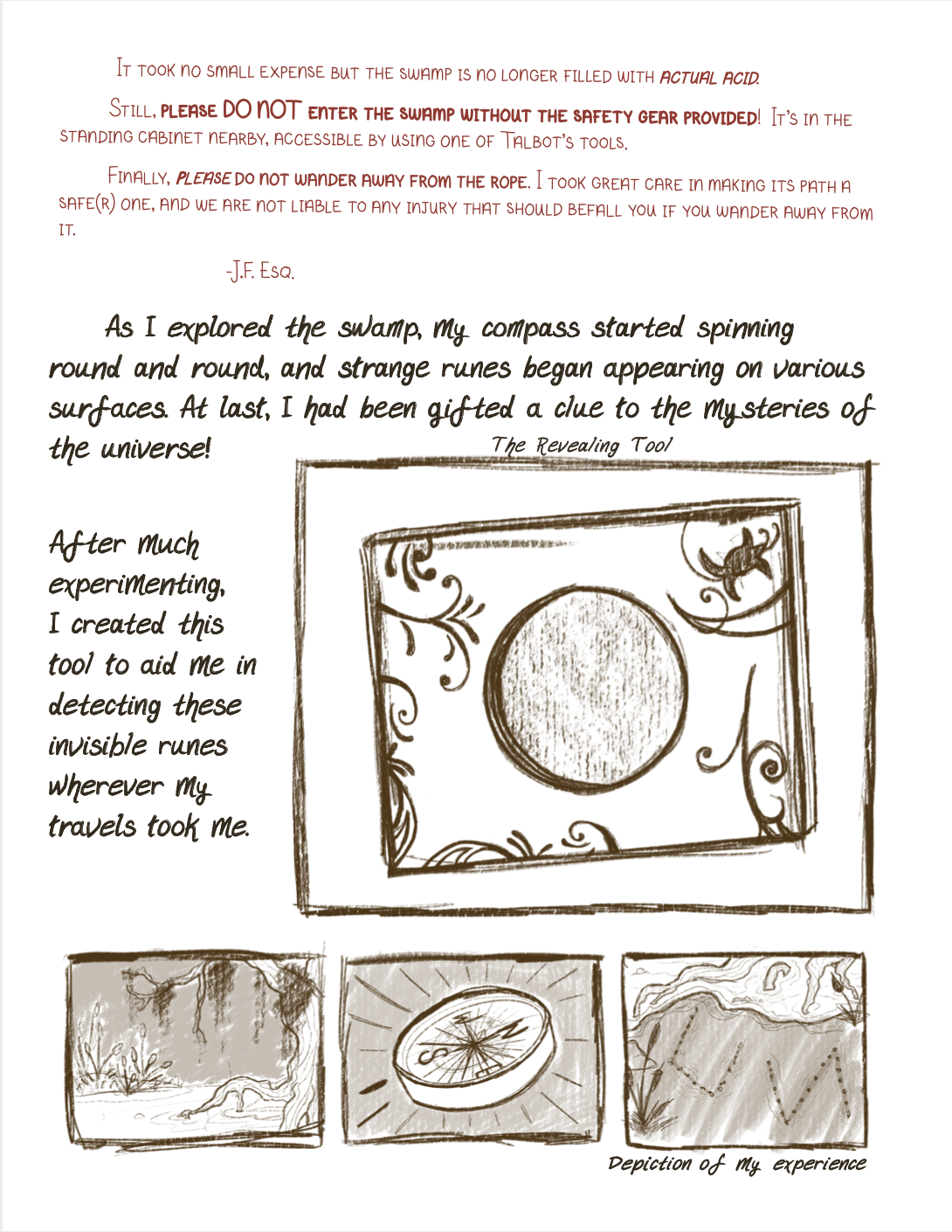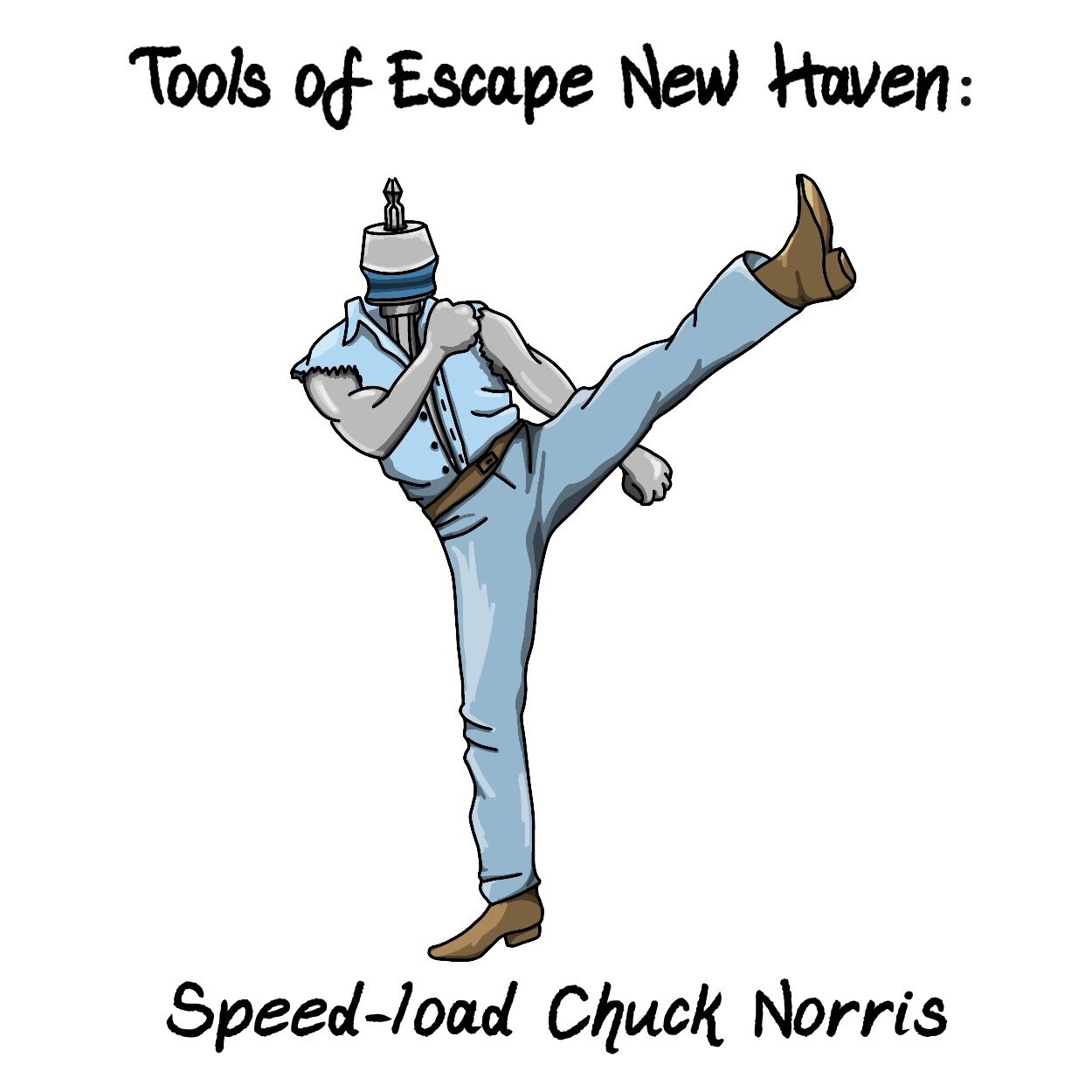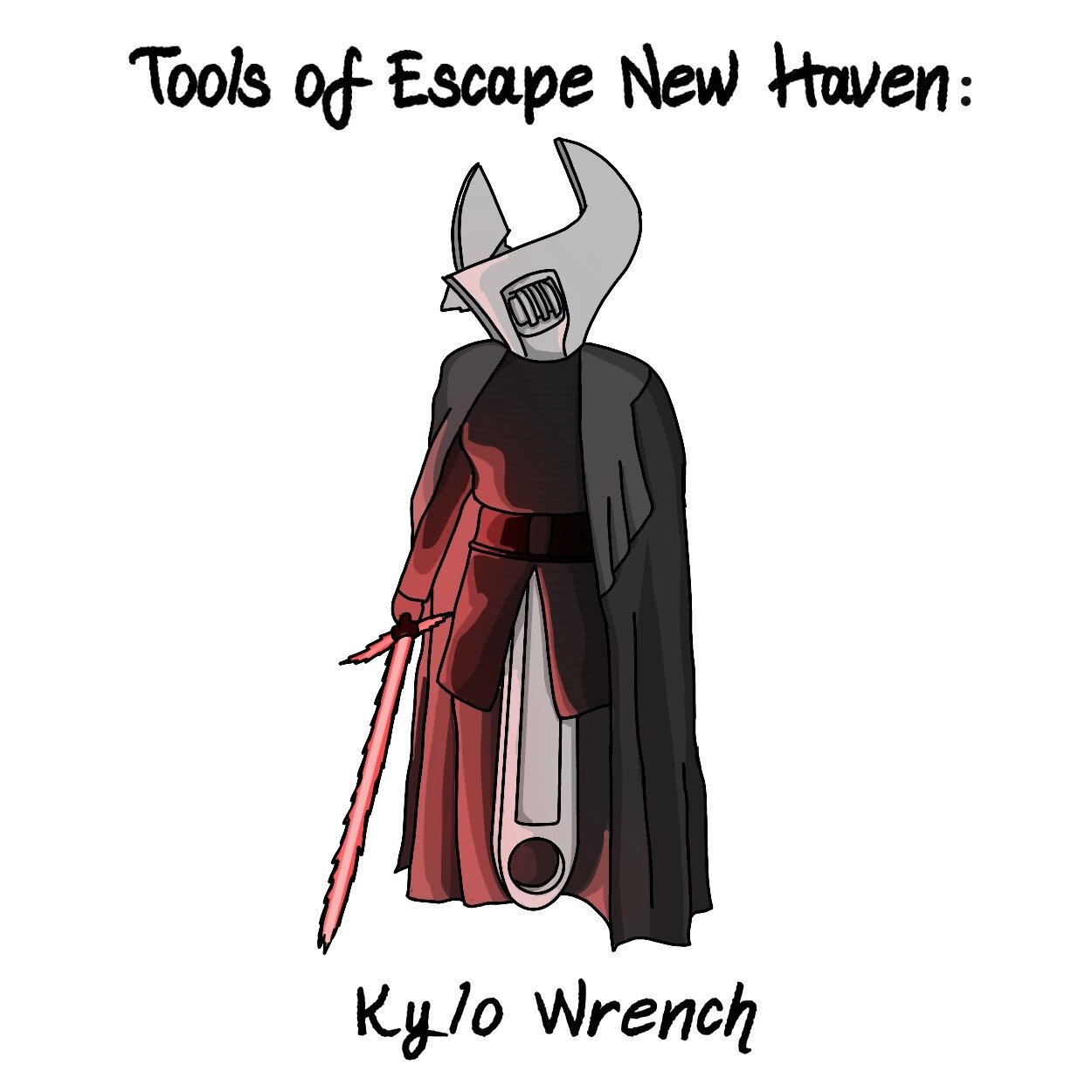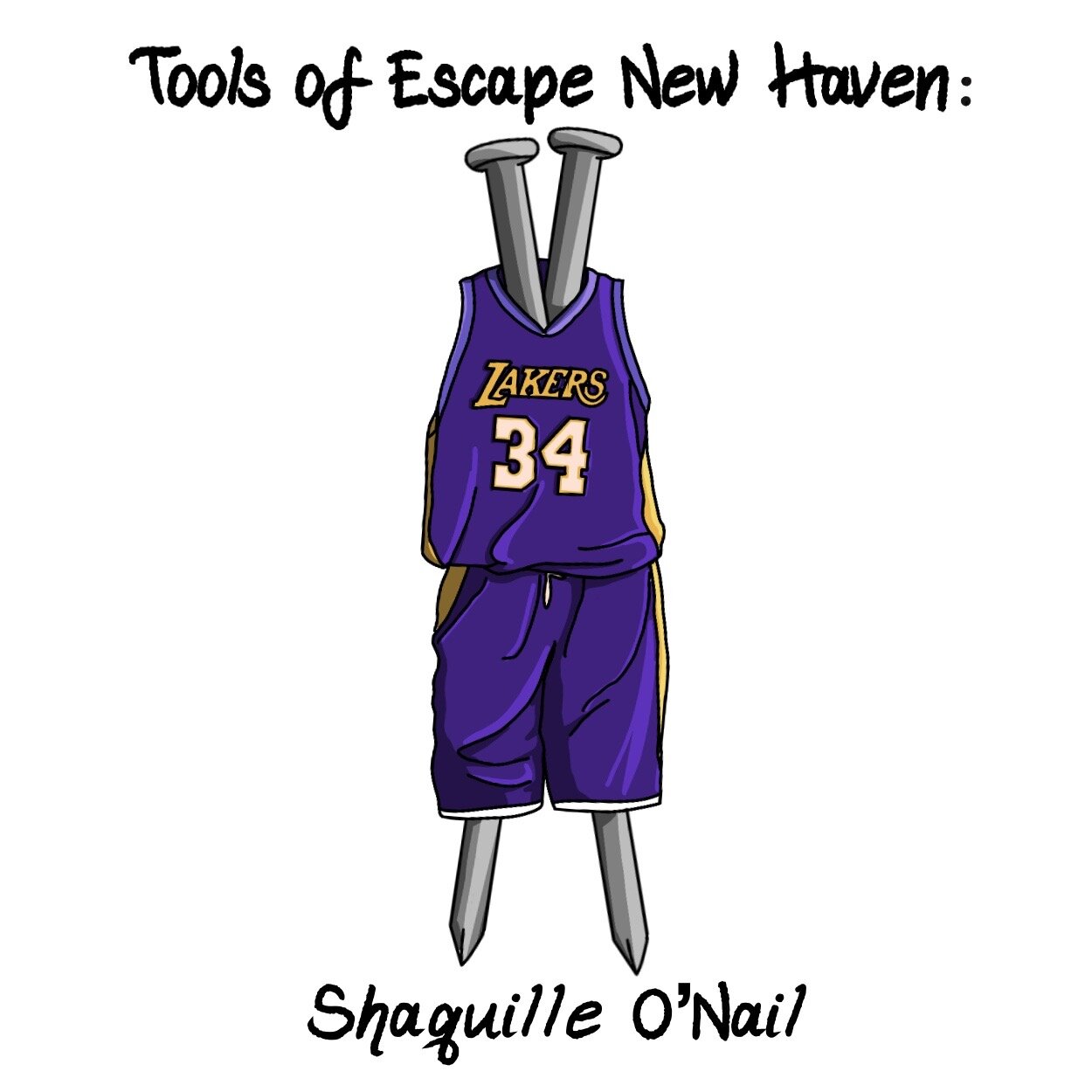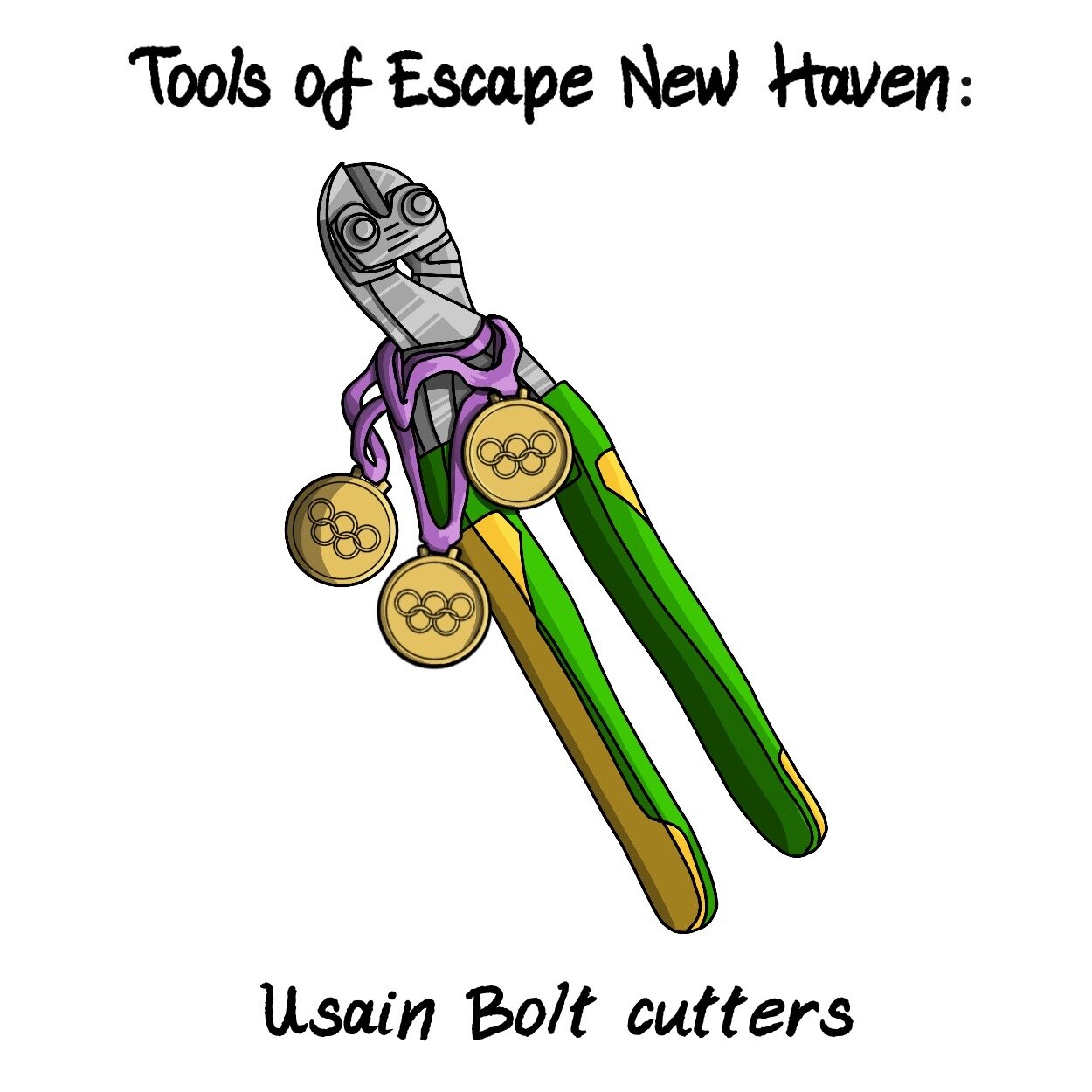Project Summary
Role: Prop Designer, Illustrator, Layout Designer, Graphic Designer, Narrative Designer
Date: May - July 2020
Tools: Adobe Illustrator, Adobe InDesign, Procreate, Slack, Zoom, iPad Pro
Background
Escape New Haven is an escape room based (clearly) in New Haven, CT.
I was brought on to the team as a “Visual Storyteller”, a temporary 4-week position to help the game designers bring their new adventure to life by designing props, advertisements, and helping with story development.
The Whole Story
A Tale of Two Problems
Summer of 2020 was a bad time to be an escape room, but the folks at Escape New Haven had a plan up their sleeves– an outdoor, self-paced adventure through the woods up in Mystic, CT. In order to make sure adventurers were only interacting with their party, however, all instruction needed to be built in to the game itself.
Consequently, my biggest challenge would be working with the story lead to develop the game’s core prop: a “100-year-old journal”. Not only did the journal need to provide instructions for completing the tasks in the adventure and give hints to stuck participants, it had to do so while simultaneously being immersive to the story, easily reproducible, completely weatherproof, and remotely constructed.
This led to two primary problems:
The Technical Problem
Usually, escape rooms are timed events, full of props that serve one or two aspects of the story rather than a guide for the whole, and manned by an employee who can help groups if they get stuck. They also, typically, don’t care what the weather is like outside.
How do you remotely design a weatherproof, immersive, accessible prop that acts as the guide for a self-paced outdoor escape room?
The Narrative Problem
The story had a solid foundation – an eccentric billionaire explorer left a challenge in his will 100 years ago, and anyone who could solve it got his inheritance – but the journal ran into several logistical problems. How could we explain the obviously new hardware? How could we ensure players clearly understood the tasks? How would we keep people from sinking into the literal swamp just off the trail?
How do you make the guidebook for a brand new escape room feel like it’s part of a 100-year-old challenge?
Think Outside The Book
After speaking at length with both the story lead and ENH’s co-owners, I narrowed down the future prop’s priorities to the following:
Durable– The escape room was 100% outdoors, at one point taking participants through a literal swamp. The prop needed to be able to withstand the elements, be easily cleaned, and not easily torn.
Understandable– Since players would not be able to turn to employees for hints or instructions if they got stuck, the guide book needed to be readable and understandable by groups of all levels and ages.
Immersive– Immersion is the key in any good escape room. Because they couldn’t rely on their usual methods of theming a room, most of the legwork in this regard had to come from the props.
The Technical Solution
Maintaining immersion is critical when it comes to escape rooms, so to affordably create a weatherproof and accessible guidebook that’s 100% on-theme, you have to make it yourself.
So you hand-bind sheaves of reinforced waterproof paper and faux leather into an oversized, fully-illustrated, “100-year-old journal”
The Narrative Solution
Players needed to feel like they were on the hunt for an eccentric billionaire’s inheritance, but the estate logically had to be managed by somebody in the interim, right?
So I added Jerome, a fictional estate lawyer.
He posted sticky notes into the journal warning participants of safety concerns, took it upon himself to modernize the puzzles, and added a hint section to the back of the book in hopes of finally getting this cumbersome file off his desk.
One of the “notes” added to the journal by Jerome


